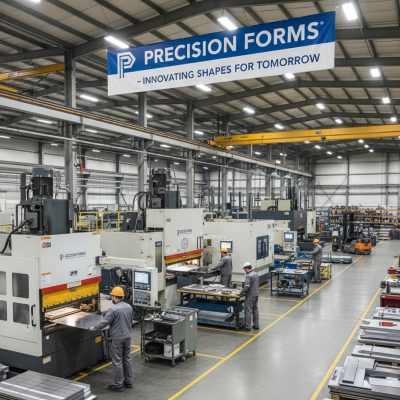In an era where global disruptions—from pandemics to geopolitical tensions—strike with little warning, supply chain leaders face a high-stakes dilemma: Should they prioritize the streamlined precision of efficiency, or the quick-footed adaptability of agility? The answer, as it turns out, isn’t an either/or choice. It’s about striking a strategic balance that turns potential chaos into competitive advantage.
This post explores the core differences between agility and efficiency, the risks of tipping too far in one direction, real-world examples of balanced design, and actionable strategies to integrate both. Whether you’re a CSCO or a procurement pro, let’s dive into how to build supply chains that are as resilient as they are cost-effective.
Defining the Duo: Agility vs. Efficiency in Supply Chains
At its heart, efficiency is about doing more with less. Think lean supply chains, which focus on waste reduction, cost minimization, and streamlined operations through techniques like Just-in-Time (JIT) inventory. These systems shine in stable environments, where predictable demand allows for long production runs and minimal stockpiles, keeping carrying costs low but leaving little room for surprises.
In contrast, agility emphasizes flexibility and speed. Agile supply chains are built to pivot rapidly in response to market fluctuations, customer whims, or external shocks—maintaining higher inventory buffers and shorter lead times to enable quick customization and fulfillment. While this approach incurs higher upfront costs, it ensures businesses can seize opportunities or mitigate disruptions without knee-jerk overreactions.
The key differences boil down to focus areas:
| Aspect | Efficiency (Lean) Approach | Agility Approach |
|---|---|---|
| Inventory | Minimal, JIT to cut costs | Strategic buffers for demand variability |
| Production | Standardized, long runs | Flexible, short runs for customization |
| Demand Handling | Predictable, forecast-driven | Variable, real-time responsive |
| Lead Times | Longer, optimized for volume | Shorter, prioritized for speed |
| Risk Profile | Vulnerable to disruptions | Resilient but costlier |
Choosing one over the other depends on your industry—stable sectors like consumer goods lean efficient, while fashion or tech demand agility. But in today’s hyper-connected world, pure plays on either are risky.
The Perils of Imbalance and the Power of the "Tripolar Strategy"
Lean toward efficiency too heavily, and you’re a house of cards waiting for the next storm. The COVID-19 pandemic exposed this brutally: Companies reliant on global JIT models faced crippling shortages as borders closed and suppliers faltered. Efficiency slashed costs but amplified fragility, turning minor hiccups into multimillion-dollar headaches.
Flip to pure agility, and you risk ballooning expenses—extra inventory ties up capital, and constant flexibility can erode margins without delivering proportional value. The challenge? These aren’t mutually exclusive; they’re interdependent in what experts call a “tripolar strategy” that also weaves in resilience.
Balancing the trio means optimizing for cost, service, and sustainability while using agility to reconfigure networks swiftly. For instance, digital tools can boost all three: Smarter factories cut cycle times from monthly to weekly without sacrificing output. Yet, trade-offs persist—sourcing from low-cost Asia boosts efficiency but hampers agility due to extended lead times. The sweet spot? Continuous assessment, adapting to your industry’s volatility and strategic goals.
Lessons from the Frontlines: Case Studies in Balanced Design
Theory is one thing; execution is another. Here are three standout examples of companies nailing the agility-efficiency dance:
- Zara (Inditex Group): The fast-fashion giant embodies a hybrid model, using lean principles for core operations—like efficient manufacturing in Spain and Portugal—while injecting agility through delayed final production stages. This lets Zara respond to trends in weeks, not months, segmenting predictable staples (lean) from volatile hits (agile). Result? Billions in savings and market dominance.
- Tesla: Facing the 2021 chip shortage, Tesla’s vertically integrated supply chain—powered by in-house software and process integration—allowed rapid reconfiguration. They rewrote firmware overnight to use alternative chips, blending efficiency (proprietary tech minimizing waste) with agility (real-time demand sensing), turning a crisis into a lead over rivals.
- Kimberly-Clark: For everyday essentials like tissues, they apply lean efficiency to keep costs razor-sharp. But for promotional spikes or new launches, agile tactics kick in—higher inventories and flexible production ensure no lost sales. This segmentation approach maintains overall profitability while cushioning demand swings.
These cases show balance isn’t static; it’s a dynamic process tailored to context.
Six Strategies to Forge Your Balanced Supply Chain
Ready to redesign? Start with these proven tactics, blending lean discipline with agile responsiveness:
- Master Demand Forecasting: Leverage predictive analytics on historical data to anticipate peaks and troughs, maintaining optimal stock without excess. This keeps efficiency intact while enabling agile pivots for promotions.
- Set Smart SKU Reorder Points: Analyze sales data per stock-keeping unit to automate low-stock alerts, preventing outages and overstock— a lean win that supports agile fulfillment.
- Harness Real-Time Data: Integrate visibility tools for instant inventory insights, fueling better decisions, forecasting, and cost tweaks on the fly.
- Upgrade Warehouse Tech: Deploy management systems and automation to streamline picking, packing, and error-proof operations, boosting speed without inflating headcount.
- Diversify Inventory Distribution: Spread stock across multiple locations to cut shipping times and risks, ensuring continuity during disruptions while optimizing costs.
- Team Up with a 3PL Partner: Outsource logistics to experts who bring tech and scale, freeing you to focus on core strategy—agility without the overhead.
Layer in cross-team collaboration and tech like AI for end-to-end integration, and you’re set for a resilient, balanced chain.
Striking the Balance: Your Next Move
In 2025, supply chains aren’t just pipelines—they’re strategic engines for growth. By ditching the agility-vs.-efficiency false dichotomy for a nuanced, tripolar approach, you can weather storms, delight customers, and outpace competitors. The disruptions won’t stop, but a balanced design turns them into tailwinds.
Get the White Paper: Streamlining Procurement Processes for SMB Manufacturers
Get instant access to our white paper on Must-Know Procurement Tips for SMB Manufacturers by filling out the form below.
Get in Touch
Learn more about Lasso supply chain solutions for SMB manufacturers
Please complete the form and we will be in touch as soon as possible.







